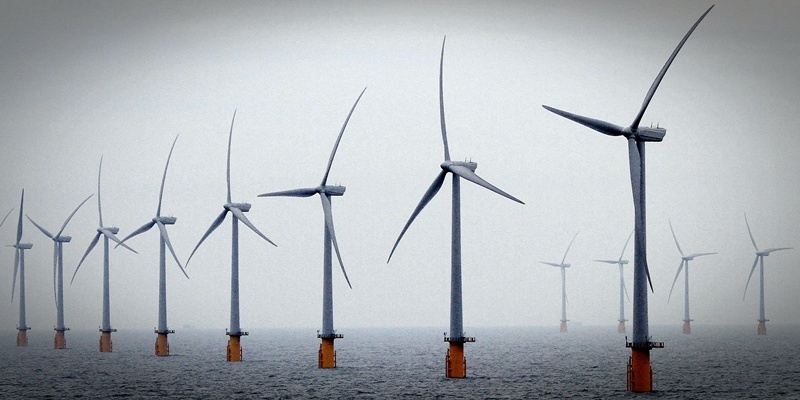First Minister Alex Salmond has dismissed a leading financial house’s warning that an independent Scotland could not afford to sustain a homegrown renewable energy industry.
Citigroup said major players such as Perth firm SSE Renewables and ScottishPower should be ”extremely cautious” in their investment decisions and even suggested that no new renewable projects should be developed while Scotland’s constitutional future remains unclear.
The row is of particular concern in the north-east as Spanish energy giant Gamesa is mulling over a decision to locate a 150m turbine manufacturing plant at Dundee or at a rival port in England. Fife Council is also bidding for £17m to expand the Methil Energy Park and other facilities, and create 1,000 jobs.
The Citigroup report by analyst Peter Atherton says the SNP’s flagship policies of achieving independence while aggressively growing renewables are not compatible.
He says Scotland’s green-driven ”industrial renaissance” would need generating capacity to double by 2020 and require investment of around £46bn.
The report estimates the Scottish industry would need annual subsidies of an ”unaffordable” £4bn post-independence and said the ”worst-case scenario” would be realised if renewable electricity producers were cut off from UK subsidies.
Mr Atherton advises renewables firms to proceed with caution unless the Scottish and UK governments are willing to provide a legally binding guarantee protecting the current subsidy scheme.
He states: ”Developers should only build renewable assets where they are certain that the Scottish consumer base alone could support the subsidy. In our view that effectively rules out any new offshore wind development in Scotland, and would probably limit onshore wind to what has already been built and is currently under construction.”
It emerged on Wednesday that a similar point had been made during testimony on behalf of environmental groups including the John Muir Trust at the inquiry into the Beauly Denny power line in 2007. JMT head of policy Helen McDade said it is ”scandalous” that politicians across the UK are not urgently reassessing the cost of the renewables subsidy mechanism.
Niall Stuart, chief executive of industry body Scottish Renewables, said the independence issue was one for the Scottish people but investment in renewables was continuing to come on stream.
He said: ”If we put the politics to one side, the facts are that the Scottish renewables industry has invested more than £750m over the last 12 months, with industry plans for the future totalling £46bn of capital investment.”
The political backlash at Holyrood led to renewed calls for the SNP to show its hand over when the independence referendum would take place.
Scottish Labour leader Iain Gray said: ”As this report shows, the SNP’s refusal to come clean about a referendum is creating uncertainty and damaging Scotland’s economy.”
The furore forced First Minister Alex Salmond to take time out from his business and education focused tour of the Middle East to address concerns. He pointed out that Mitsubishi, Gamesa and Korean firm Doosan Power Systems had all invested in Scotland recently, and said the wider UK would need power produced north of the border to fulfil its energy requirements.
Turning to the report, the First Minister said the analysis appeared to be on the basis all of the electricity would be used in Scotland.
”It is power for export. Believe me, in the modern world the ability to produce power is a great asset, not a liability,” he said.
SSE which has plans to enhance its renewables portfolio with a massive turbine array off the Firth of Forth declined to comment directly on the Citigroup report. However, the firm said it already owned and operated assets across various jurisdictions in the UK.
Dundee East MP Stewart Hosie was confident the city would enjoy a renewables boom. He said Dundee’s location and geographical assets are a ”perfect fit” for this key new industry.
Conservative MSP David McLetchie said: ”This is further evidence that the uncertainty surrounding the independence referendum is starting to create uncertainty amongst the business community which is damaging to Scotland’s interests.”
Green Party co-convener Patrick Harvie MSP said Citigroup’s warning ignored the profitability of the sector and growing demand for clean energy.
He said: ”Whether Scotland is independent or remains part of the UK, we have enormous potential for renewables, and the potential to export substantial energy to the rest of the UK and our other neighbours. The sector is already profitable, and will only get more so.”
Gareth Fuller/PA Archive
